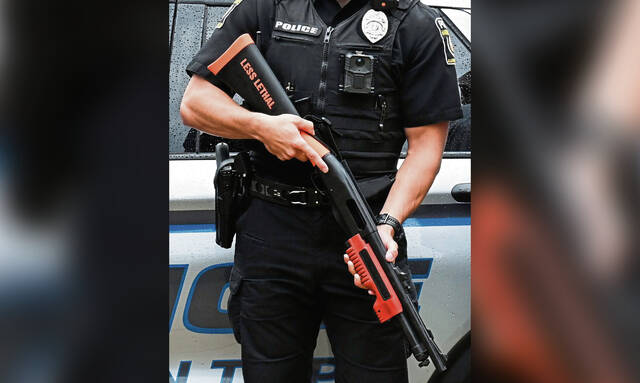Editorial: Less-than-lethal weapons are good move but still require restraint
A serious interaction with law enforcement can have deadly consequences.
In 2024, there were 32 fatal incidents of police shootings in Pennsylvania. The first was Jan. 7, when Christopher Lee Shepherd, 48, of Upper St. Clair was shot as SWAT officers responded to his home during a mental health event. The last was also in Pittsburgh, in the Allentown neighborhood, when Mark Coleman, 45, was shot in a standoff with SWAT attempting to arrest him for gun crimes.
The two incidents might seem similar. Both subjects were violent. Both were armed — Shepherd with a knife and Coleman with a gun. SWAT turned out for both.
But one marked difference was history. Shepherd had a documented record of mental illness. His family was turning to police for help to get him treatment. Coleman’s record was of criminal activity; it was his felony convictions preventing him from possessing a gun that prompted the interaction.
The difference is one reason many police departments are turning to different tools for responding to calls for mental health emergencies. Harrison police recently received a $5,000 grant from Walmart to acquire five less- lethal weapons that might be used in specific situations.
“It’s not all mental health. It’s anywhere we need to mitigate a difficult situation,” said Harrison Chief Brian Turack, who has seen a 500% increase in mental health and other crisis situations in his area over the last 13 years.
Harrison’s new tools are refurbished shotguns — distinguished by bright orange stocks and grips — that fire compressed bean bags.
That’s just one variety of less-than-lethal weaponry. Some departments use gases, rubber bullets, batons and water cannons. As Friday night turned into Saturday morning, Pittsburgh police used things like pepper spray and inert vapor or smoke to redirect unruly crowds on East Carson Street on the South Side.
It’s smart and responsive for departments to acknowledge that different situations can require alternative responses. As the saying goes, you don’t need to bring a gun to a knife fight. It’s still important to have adequate force to protect officers, protect the public and, in many cases, protect the subject in question. Given the mental health aspect, these individuals are sometimes not criminals but rather people in desperate need of help.
It is just as important to remember that these weapons still need to be employed cautiously, with restraint and respect for their dangers.
An Associated Press investigation last year, in cooperation with PBS and the Howard Centers for Investigative Journalism, showed 1,036 deaths attributed to less-than-lethal weapons over a 10-year period.
That total should include Jim Rogers, 54, the homeless man who died after repeatedly being shocked with a Taser by a Pittsburgh police officer in 2021. Tasers are included in the less-than-lethal arsenal.
This isn’t an indictment of the departments looking to expand the way they keep all of us safe. It’s a difficult and dangerous job. It cannot be ignored that officers have died responding to these calls as well. In 2023, McKeesport Officer Sean Sluganski, 32, died responding to a mental health check.
It’s just a reminder that less-than-lethal is not the same as non-lethal.
Remove the ads from your TribLIVE reading experience but still support the journalists who create the content with TribLIVE Ad-Free.

